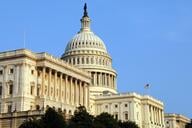You have /5 articles left.
Sign up for a free account or log in.
Among Broadway’s current hits is Henrik Ibsen’s 1882 classic portrait of a whistle blower, An Enemy of the People.
As you may recall, the play pits truth and integrity against compromise and corruption and truth-telling against a respect for democratic principles.
Dr. Thomas Stockmann, the protagonist, discovers that the town’s medicinal baths, a major potential source of revenue, are contaminated by runoff from nearby tanneries. His commitment to exposing the truth, despite the potential economic consequences for the townspeople, raises one of the issues that lies at the play’s heart: the personal cost of integrity.
Dr. Stockmann considers himself a man of moral courage, a straight shooter who is willing to stand up for truth in the face of societal and family pressure. The townspeople and their leaders, who view his claims with skepticism, regard him as a troublemaker, a rabblerouser, a pest, a nuisance and a menace. In the end, he and his daughter are left jobless, his son is beaten and they are forced to move in with one of their only remaining friends.
Viewed at a literal level, the play sets economic interests against public health and a knowledgeable and disinterested minority against the tyranny of a misinformed, self-interested majority. It can also be interpreted as an attack on a lapdog press that bows to public opinion and on the community leaders who ignore the public welfare when the financial costs are high.
This drama, however, isn’t a simple morality play. While addressing such serious themes as corruption, integrity and the flaws of democracy, the play also contains elements of satire and irony. Some characters, including Dr. Stockmann, are exaggerated to the point of farce. Ibsen’s portrayal of a mob mentality, too, is over the top.
The play can thus be seen as both a serious critique of societal flaws and a satirical commentary on human nature. The tone shifts between earnest drama and dark comedy, making it a complex work that resists simple classification.
Further complicating any interpretation of the play is Dr. Stockmann’s embrace of anti-democratic and snobbish sentiments. He expresses open frustration with the majority’s ignorance and suggests that the only “strong” and intelligent should lead:
The majority is never right. Never, I tell you! That's one of these lies in society that no free and intelligent man can help rebelling against. Who are the people that make up the biggest proportion of the population—the intelligent ones or the fools?”
His statements can be interpreted as elitist and even eugenicist, as he questions the value of universal suffrage and the capacity of the general populace to make informed decisions.
While Dr. Stockmann’s commitment to truth and integrity is admirable, his disdain for the democratic process and the common people is unsettling. It’s no surprise that he faces skepticism and ostracism from the townspeople and local leaders.
Ibsen, in short, has created a complex character whose virtues and flaws provoke thought and debate. The audience is meant to grapple with the contradictions in Stockmann’s character, recognizing both his heroism and his problematic views.
The play’s box office success suggests that its themes remain as relevant today as when it was first performed 141 years ago. In the pandemic’s wake, we still need Ibsen’s insights into the complexities of truth-telling, the responsibilities of scientific authorities and the challenges of balancing conflicting interests.
The communication failures of the CDC produced significant public distrust with dire long-term consequences. If health authorities are to restore their credibility, rebuild public faith, and ensure compliance and cooperation in the future, they must engage in an open discussion about the errors they made.
However, this society hasn’t yet had the reckoning it needs about how public health authorities communicated during the pandemic. Here are some of the questions that need to be asked:
- Were pandemic era public health authorities devious and manipulative in ways that will prove counterproductive in the long run?
- Did leading figures in the CDC hide or even destroy evidence that might have raised public doubts about their honesty and transparency?
- Did the blue states maintain the lockdowns too long after the vaccines were introduced?
Errors made during the pandemic contributed to a view of experts as members of an elite class disconnected from the everyday experiences and concerns of ordinary people. As in An Enemy of the People, this led to resentment and distrust.
Early in the pandemic, public health guidelines changed frequently as new information emerged. This was necessary as understanding of the virus evolved, but it also led to public confusion and skepticism. The failure to clearly explain why recommendations were changing eroded trust. People often received mixed signals about mask usage, social distancing and other preventive measures, which undermined compliance and created a perception of incompetence or inconsistency among health authorities.
At the same time, different health agencies and officials provided contradictory advice. For instance, initial disagreements on mask-wearing between the CDC and the WHO contributed to public doubt about the effectiveness of masks.
Often, the rationale behind certain public health decisions was not communicated effectively. The public was left in the dark about the data and considerations guiding policy changes, fostering suspicion and resistance. In some cases, data and scientific findings were not made readily available to the public, preventing independent verification and deeper understanding.
At times, public health officials oversimplified their messages, underestimating the public’s ability to understand complex scientific concepts. This approach was perceived as patronizing and further diminished public trust.
An even bigger problem was the failure to frankly acknowledge economic and social trade-offs.
Public health decisions often involve complex balancing acts, such as weighing the need for lockdowns with economic and mental health impacts. These trade-offs were not communicated transparently, leading to public dissatisfaction and opposition.
Nor were the ethical implications of public health measures, such as prioritizing certain populations for vaccination, clearly discussed, leading to perceptions of unfairness or bias.
Let me suggest some steps that expert authorities need to take to forestall doubts about their honesty and sagacity.
- In communicating with the public, emphasize transparency, clarity and humility.
Avoid jargon. Engage with the public, using clear, plain language. Acknowledge the evolving nature of science. Share the data and the rationale behind any conclusions. Highlight the ethical and practical considerations behind any policy recommendations.
- Be upfront about what is known and unknown or uncertain.
Only by acknowledging uncertainties, gaps in knowledge, and limitations and potential biases in research studies can experts build trust. Admitting gaps in knowledge can enhance credibility and prepare the public for future updates.
- Engage in two-way communication and dialogue.
Encourage questions and provide clear, straightforward answers. Also, establish mechanisms for public feedback to gauge public sentiment and address concerns forthrightly. Create opportunities for public dialogue, such as town halls, press conferences, question-and-answer sessions, and forums where officials can directly address people’s questions and concerns.
- Make the underlying data and research findings publicly accessible.
Transparency is essential in order to build trust and allow independent verification by other scientists and the public.
- Clearly explain the rationale behind policy recommendations.
Detail the evidence considered, the potential risks and benefits, and the trade-offs involved in decision-making. Also, discuss the ethical considerations involved in making policy recommendations, such as balancing individual freedoms with community safety and the protection of especially vulnerable populations.
- Discuss practical constraints and real-world challenges.
Any policy recommendations must be realistic. Policy implementation depends on resources, logistics and, above all, public compliance. Operate in the real world, not an abstract world free from any practical constraints.
- Concede that all recommendations are conditional or provisional.
State explicitly that any policy proposals are based on the best available information at the time, but any recommendations may change as new evidence becomes available. Make it clear that revisions and updates are a normal part of scientific progress as new data leads to refinements and improvements in understanding.
- Discuss the difference between the scientific evidence and policy recommendations.
During the pandemic, CDC officials and other public health authorities often cited “the science” to justify their policy recommendations. But using "the science" as a blanket justification for policy recommendations proved problematic because it oversimplified the complex process of policymaking, undermined public trust and contributed to confusion and skepticism as scientific understanding evolved.
Science can inform but doesn’t dictate policy. Science often deals with probabilities and uncertainties rather than certainties. Effective policy decisions must balance scientific evidence with practical, ethical, economic and social considerations. For example, recommendations on lockdowns or school closures must weigh public health benefits against economic impacts and social consequences.
Policymaking involves value judgments about acceptable levels of risk, trade-offs and priorities. Science can inform these decisions, but it cannot determine them. Also, saying “the science” dictates a policy deflects responsibility from those entrusted with making decisions. It implies that decisions are purely objective and removes the perceived accountability from policymakers. Policy decisions, in other words, can’t be depoliticized.
The public health communication failures during the COVID-19 pandemic will have long-lasting consequences for public trust and compliance.
A public reckoning is necessary to restore trust in public health institutions. This involves a transparent review of what went wrong, why it happened and how similar issues can be prevented in the future. Acknowledging and learning from mistakes is crucial for improving future public health responses.
Here’s an adage that public health authorities need to embrace: Own your errors if you hope to be credible in the future. Treat past mistakes not simply as failures, but as lessons. Only by learning from past missteps can the authorities hope to do better next time.



